Album review: Taylor Swift’s overlong Tortured Poets anthology a rare misstep from pop’s biggest star
She’s the poet laureate for the TikTok generation, but Taylor Swift needs a team around her who can tell her when it’s time to shut up.

Album reviews for week of April 26 2024:
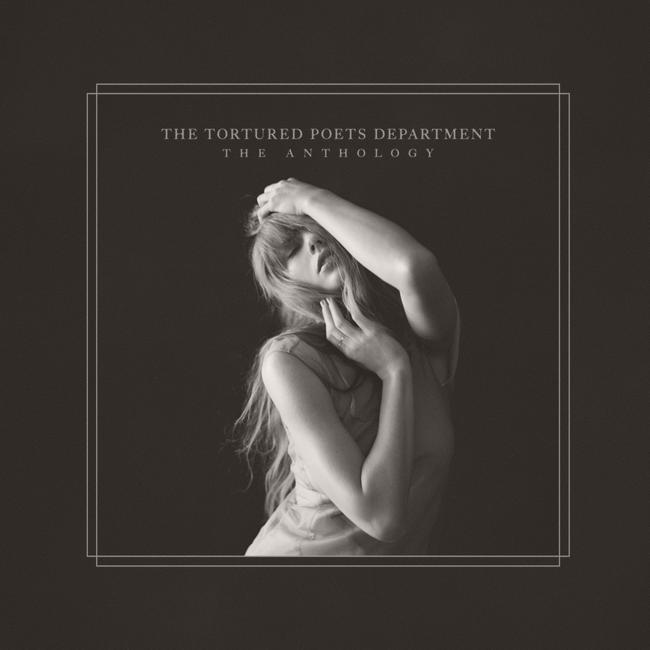
POP
The Tortured Poets Department: The Anthology
Taylor Swift
Republic/Universal
Taylor Swift needs to break up with Jack Antonoff. For someone who sings a lot about boys she’s (reportedly) had relationships with, the one bloke she needs to sever ties with is her long-serving producer and collaborator. After working together on every one of her albums since 2014, it’s time for Swift to be pushed into a new creative partnership. In order to continue on her already impressive career trajectory she – like politicians – needs a team that can tell her when to shut up. Her new album, The Tortured Poets Department, is certainly heavy on the torture. The first 16 tracks are a delicious treat. She’s the poet laureate for the TikTok generation, lamenting about heartbreak, “ghosting”, self-discovery and darker sides of romance. The 15 additional B-sides making up The Anthology, though, are too much. They are the audible version of what she sings about in the title track, the result of eating “seven bars of chocolate” after a smoke. Everyone needs an editor, even Swift. The album is a case study in arrested development. She is still – according to track 24, thanK you aIMee – mad that Kim Kardashian treated her poorly several years (and albums) ago.
Her latest album appears to be playing it safe, musically. There are moments of wonderful lyrics and genuine humour, but she’s at risk of making music solely for her rusted-on fans. If she is in the game only for Swifties, it’s not a silly concept; they did make her a billionaire in the midst of her global Eras tour. But rather than actually listening to her music these days, many fans, critics and casual listeners are more interested in trying to pick the paternity of each track, which in turn makes us the tortured ones. She needs to write songs again. Classic songs. Not just three-minute games of audio hide-and-seek. There’s a reason one of her earliest songs, Love Story, is still a dancefloor anthem at every wedding and party: it’s a bop; a track that is without all the “clever” hidden meanings and synthetic sounds of late. We get glimpses of that genius on But Daddy I Love Him: “I’m having his baby / No, I’m not, but you should see your faces.” There’s a reason 1989 was a seminal album for her: it was a massive departure from her previous work in terms of sound, inspiration and attitude. It raked in new audiences and married her wonderful writing with polished, propulsive synth-pop. This double album should have been relegated to her private diary or been the genesis for another documentary. Bring on a new era and fresh sound after her next break-up — hopefully with Antonoff, not Travis Kelce.
Jenna Clarke
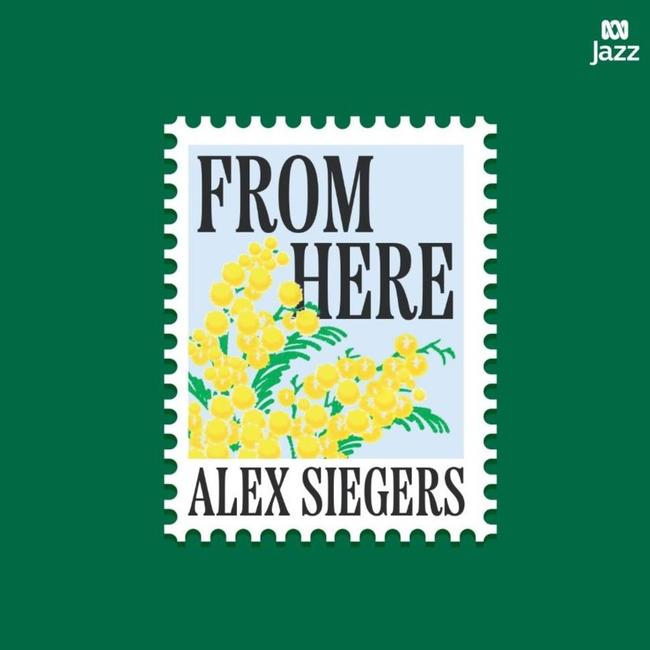
JAZZ
From Here
Alex Siegers
ABC Jazz
Singer Alex Siegers, well-known in sacred, classical and pop genres, has released a jazz album with a purpose that can be roundly applauded. It includes all-Australian compositions, the outcome of her admiration for Tim Nikolsky’s Australian Jazz Real Book, along with her frustration that so few of the compositions listed there have been recorded. Nine tracks here are a viable selection, featuring works by some of the country’s most distinguished composers and lyricists. Many highlights include Judy Bailey’s classic Colours Of My Dreams; the Col Loughnan composition Three For All, for which the late Kerrie Biddell wrote whimsical lyrics; and Sharny Russell’s tune in 7/4, Somebody’s Daughter. Siegers has an unusual, strong voice with an appealing vibrato, and an enviable range. Allied to her natural exuberance which shines through, she is well-equipped to bring off the variety of approaches needed to master the sometimes difficult compositions she has chosen. As for the backing musicians, Siegers chose well: Aaron Blakey (piano), Jacob Graham (bass) and Andrew Dickeson (drums). Their playing is immaculate throughout.
Eric Myers
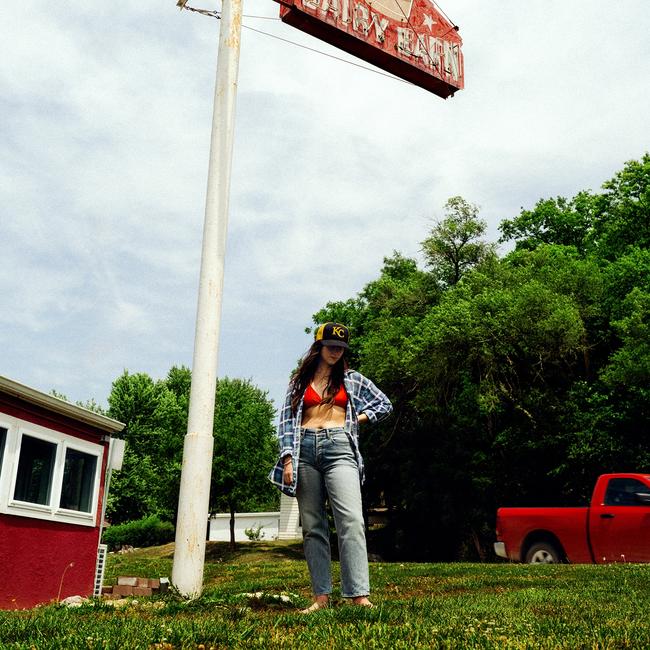
AMERICANA
Tigers Blood
Waxahatchee
Anti
Alabama-born alternative darling Katie Crutchfield, aka Waxahatchee, had an unexpected mid-career boost on her last album, Saint Cloud. A record which dialled up her Americana and country influences, it became a crossover hit in 2021 and directly informs Tigers Blood, which subscribes to the if-it- ain’t-broke philosophy of album writing. Armed with a new record deal and a crack session band that includes guitarist MJ Lenderman of equally exciting group Wednesday, Tigers Blood doubles down on the straight-shooting songwriting and affecting vocal delivery that has endeared Crutchfield to increasingly wider audiences while also keeping those extra Texan trimmings. The songs are equally as winsome, but perhaps not as gripping as some of their predecessors. It’s telling that the lead single Right Back To It — a gorgeous, banjo-flecked love song — is also the best on the record. While Crutchfield’s crafting of melody remains head and shoulders above many of her contemporaries, she has the enviable misfortune of having already done it better before.
Jonathan Seidler
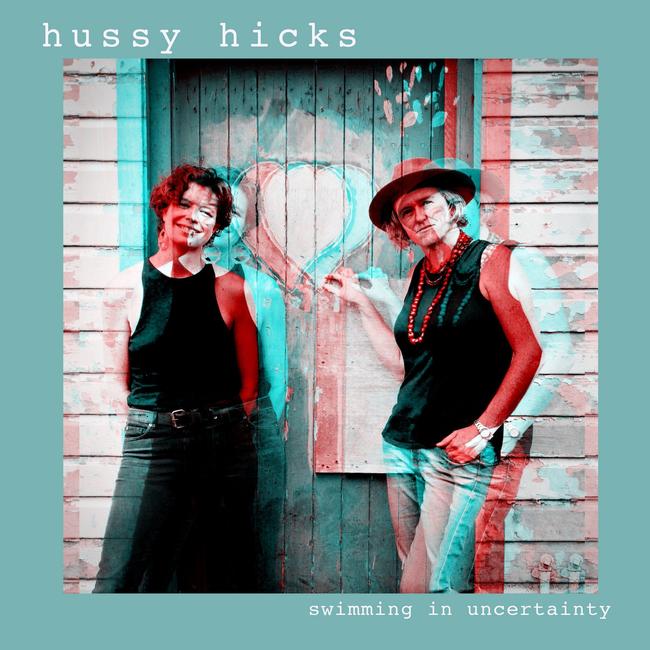
ROOTS/ROCK
Swimming in Uncertainty
Hussy Hicks
Independent
The seventh studio album from NSW Northern Rivers duo Hussy Hicks — singer Leesa Gentz and guitarist Julz Parker — incorporates three tracks from the EP Same Boat, released in 2022. While these showcase the rockier side of the band’s output (Gentz channels her inner Pat Benatar, an admitted formative influence, on one) there are eight new original songs that consolidate the Hicks’ reputation as more of a festival-friendly roots outfit. Led by single Fool on the Hill, a Ry Cooder-flavoured funk-blues featuring slide guitarist Minnie Marks, Swimming in Uncertainty is a more adventurous outing than its predecessor, 2020’s Gather Up the People. Parker in particular contrasts an all-stops-out squalling solo on Thought Mid-Thought with the fluently acoustic Sundial, while Gentz fully owns the gospel-flecked blues belter Light a Candle and token big ballad, This Game. She duets with session singer Chris E. Thomas on the country blues Ain’t It a Shame (with Lachy Doley also guesting on Hammond) and the album signs off on a quirky note with the EP track I Am Not a Dog, wherein Gentz is at her snarling best over a heavy rock riff worthy of Sabbath.
Phil Stafford
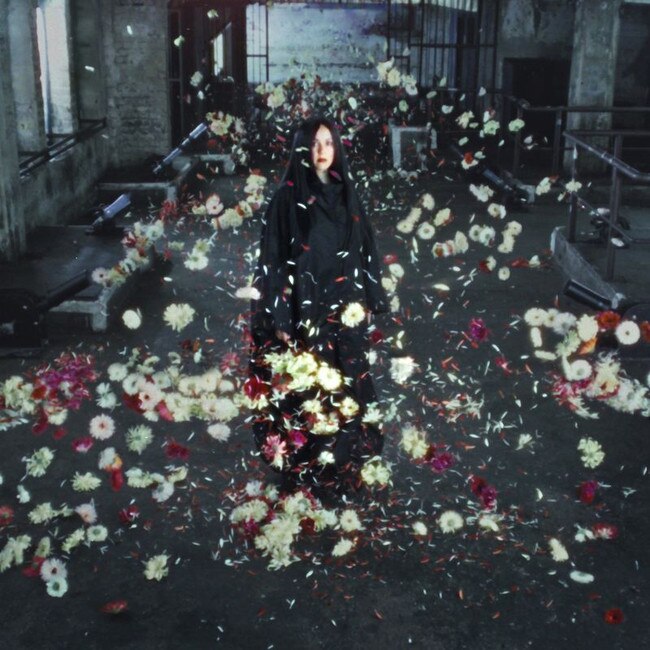
ELECTRONIC
Mother
Logic1000
Therapy
Emerging in 2019 with her debut EP, Sydney-born, now Berlin-based producer Samantha Poulter was a later arrival on the electronic scene, but you wouldn’t guess it on the strength of her debut album. This 12-track “love letter to house music” is creative, immersive, melodic and complete – a family affair channelling Poulter’s experiences as a new mother, and benefiting from the writing talents of long-time creative partner and husband, Thom McAlister. From the shuffling beats and rumbling bass of opener From Within, Poulter nods variously to house music’s expansive sonic palette — from Chicago and Latin influences to techier, minimal vibes — and adeptly shifts between moods. She sets an ominous tone on Heartbeat, shows vulnerability on closer Grown On Me, and doubles down on the four-four beats on the hypnotic body-mover Can’t Let Go. Promises is a gliding deep house number marked by Rochelle Jordan’s soulful vocal, while Self to Blame flirts with the pop realm via Kayla Blackmon’s performance. Poulter has been open on her challenges navigating the demands of the music industry. On Mother, the ode that “house music is a healer” stands true.
Tim McNamara
Album reviews for week of April 19 2024:

METALCORE
Half Living Things
Alpha Wolf
Greyscale Records / SharpTone Records
Australian heavy and alternative music has never felt healthier or more promising than it does right now. Genre leader Parkway Drive still dominates internationally — as the Byron Bay quintet has done for a decade or more — but recent years have seen the emergence of hungry new generations of groups ready to take their own bite of the apple. ARIA-nominated metalcore act Alpha Wolf very much occupy a space in the market that sees it poised to become fitting scions to the likes of Northlane and The Amity Affliction, in terms of longstanding impact and evolution of an Australian sound overseas. The Melbourne-based group once again proves its musical snarl and intelligence with third album Half Living Things. Vocalist Lochie Keogh is notably elevated on these tracks, and now carries himself with the confidence of a frontman who knows every groove, every growl and beat as if they were intuition. His confidence is shared by Alpha Wolf as a collective: guitarists Sabian Lynch and Scottie Simpson bolster each breakdown with finesse, while drummer Mitch Fogarty and bassist John Arnold provide an impactful, layered rhythmic backbone.
As a powerful follow up to 2020’s A Quiet Place To Die, this album displays the band’s balance of ferocity and ambition in dismantling any genre boundaries previously put in their way. Lead single Sucks 2 Suck taps hip-hop icon and frontman of US metal group Body Count Ice-T, marking a wild, fun and potent fusion of sounds. Such potency can be felt throughout these 12 tracks. Album opener Bring Back The Noise throws down an impressive gauntlet; Whenever You’re Ready and Feign shine with unbridled intensity in both guitar attack and punishing percussion. Garden Of Eyes, with its threatening rhythms, gives way to the fury of the album’s title track. The material heard here is at once cohesive while remaining distinctive and unique as stand-alone songs — a testament to the meticulous nature of its overall composition. A self-produced effort, Half Living Things arrives as a project that most definitely has the Alpha Wolf DNA woven into every possible element of its chemistry. An album like this can only be made by a collective whose vision for its creative output is as unshakeable as it is defined. Since its 2017 debut, the band has taken great strides on each project that bears its name, while also solidifying itself as an Australian heavy act that can continue to push the boundaries both inside the domestic scene and overseas, where it is becoming a major player. Deservedly so.
Sosefina Fuamoli
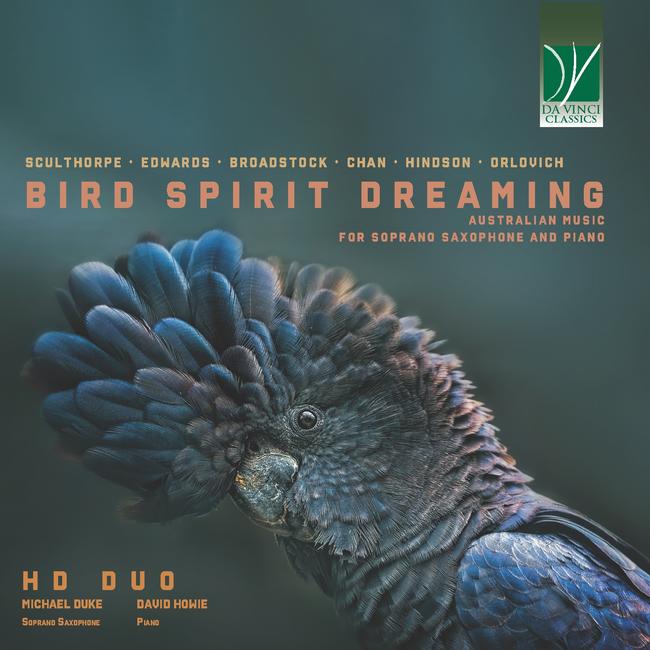
CLASSICAL
Bird Spirit Dreaming
HD Duo: Michael Duke & David Howie
DaVinci Classics
Back in 2008, two colleagues at the Sydney Conservatorium, saxophonist Michael Duke and pianist David Howie, formed the HD Duo, specialising in contemporary Australian and world music. This album is a vibrant compendium of their most recent collaboration. Six composers — all male this time; the second of their seven albums, Incandescence, is all female — are represented in 12 short movements totalling 73 minutes. All were recorded in the vibrant acoustics of the Con’s Vebrugghen Hall in late 2022. Several pieces derive from existing oboe pieces. Ross Edwards’s Bird Spirit Dreaming, three sections of his acclaimed Oboe Concerto, is easily the highlight of this album. Another highlight is Lyle Chan’s The Perfumed Calyx, one of two commissioned works here. In a more pensive and expressive way, it emerges as a kind of demonic waltz. Pieces by Peter Sculthorpe, Brenton Broadstock and Matthew Orlovich tend to overstay their welcome. Overall, the performances are crystal clear: the refreshing palette of saxophone colours are integrated with a crisp touch of keyboard.
Vincent Plush
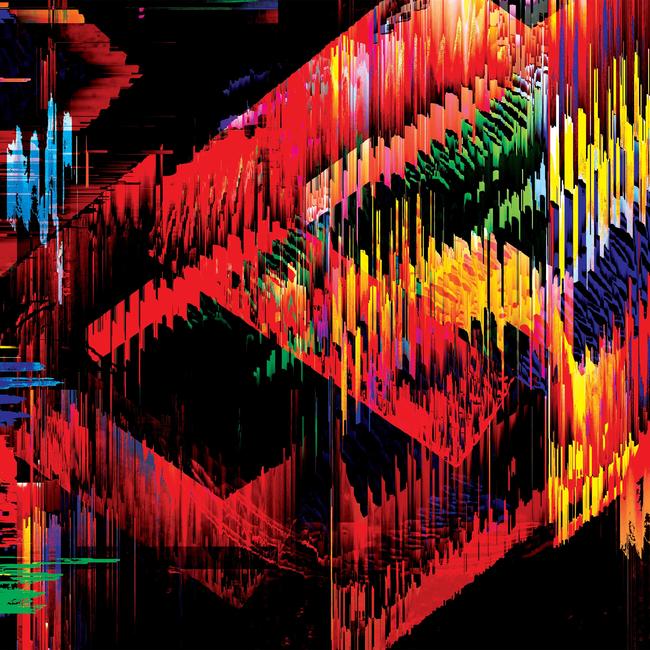
DREAM POP
Interplay
Ride
Wichita/PIAS
Since reuniting in 2014 — the same year as fellow British shoegaze act Slowdive — Ride has now been together longer in its second phase than in its first one in the late 1980s and ‘90s. The Oxford quartet’s seventh album is striking not just for its impressive quality, but for the influence of ‘80s touchstones that predated the band’s original run. Last Frontier would fit snugly on a classic John Hughes soundtrack (or a New Order record), and I Came to See the Wreck edges into the emotive synth-pop of Shout-era Tears for Fears. That’s not to say Interplay is overly derivative, only that some new reference points have been introduced. Fans of either phase of Ride should be well pleased with the album, which opens strong with the insistent guitar-pop of lead single Peace Sign. Shoegaze bands have been criticised for hiding behind their effects pedals, but these songs’ heady textures amplify rather than dampen their melodies. And for all that accumulated dreaminess, cresting and glistening melodies are still what Ride does best.
Doug Wallen
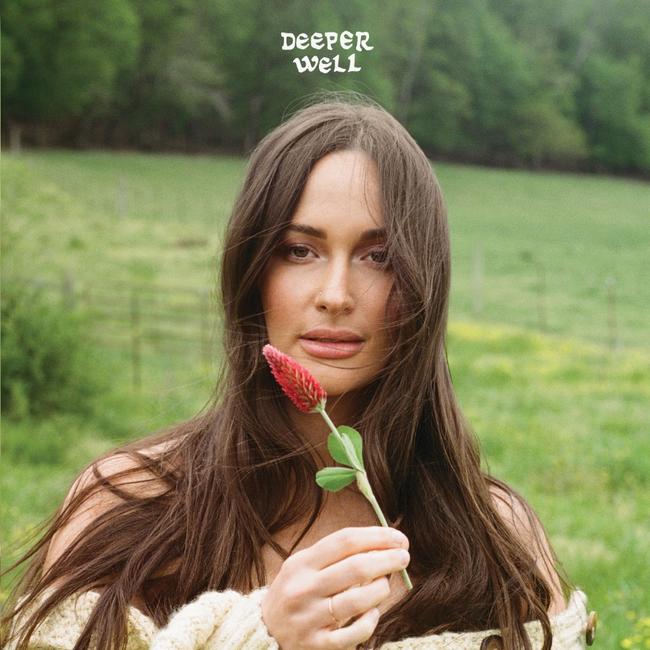
COUNTRY/FOLK
Deeper Well
Kacey Musgraves
Interscope/MCA Nashville
It was anyone’s guess what Kacey Musgraves would do next. The Grammy-winning Texan blended pop and country to perfection throughout the 2010s, but fumbled on 2021’s Star-Crossed: her would-be mainstream arrival. To retreat into old sounds would admit defeat, but doubling down on her dead-end would have proven equally fruitless. Ultimately, Musgraves realised the only way out was through, and this journey is documented across her warm, intimate fifth album Deeper Well. It’s a rustic retooling of Musgraves’ songwriting craft, now with a decidedly folksy direction sonically. Lush harmonies and chiming acoustic guitars expand Cardinal and Jade Green; on both songs, she’s rarely sounded richer from a vocal perspective. The breathy intimacy of The Architect and the title track, meanwhile, portray an artist that’s gently come back down to earth but still has wide-eyed awe of the world around her. Though this isn’t an album with the immediate impact of her 2013 debut Same Trailer Different Park or her 2018 breakthrough Golden Hour, it rewards repeat listens and results in a vital, evergreen comeback effort.
David James Young
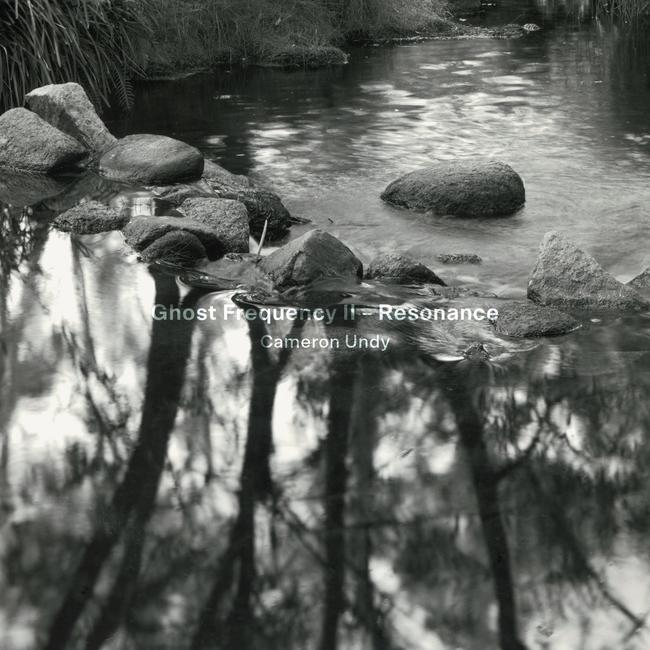
JAZZ
Ghost Frequency II: Resonance
Cameron Undy
Earshift Music
This is a follow-up to Cameron Undy’s celebrated 2022 album Ghost Frequency. There he began his intriguing exploration of rhythms found in various contemporary musics, but which have evolved over time via the African diaspora, the result of African slaves being transported to Latin America and North America. The second album is more of the same, revealing once again the musings of Undy’s fertile musical mind. He’s playing acoustic guitar, which was his first musical instrument before gravitating to the bass, his primary instrument. Perhaps only a musicologist could clearly decipher what Undy has achieved on Ghost Frequency II, but there’s no doubting the virtuosic skill with which he has created nine viable compositions to demonstrate the nuanced rhythmic forms he has arrived at through his research. I believe the key to Undy’s artistry is his interest in the inner geometry found in the ancient rhythms of the African diaspora. He has hinted at this himself, having said on ABC’s The Music Show recently that he’s inspired by “the mathematical beauty of music”.
Eric Myers

To join the conversation, please log in. Don't have an account? Register
Join the conversation, you are commenting as Logout